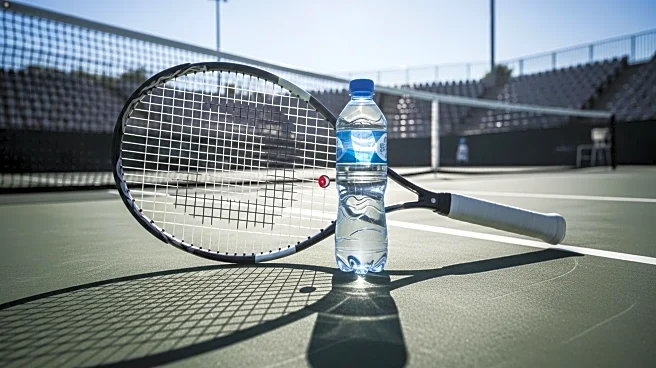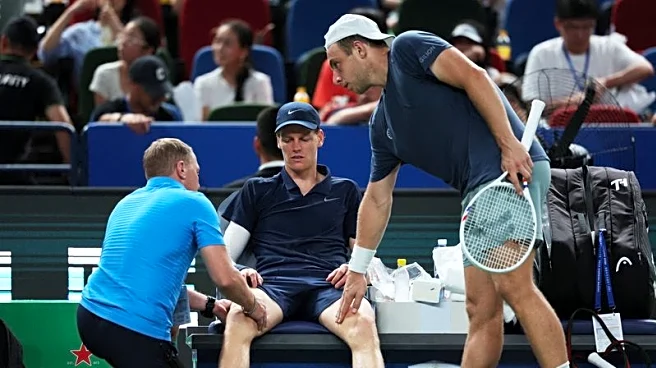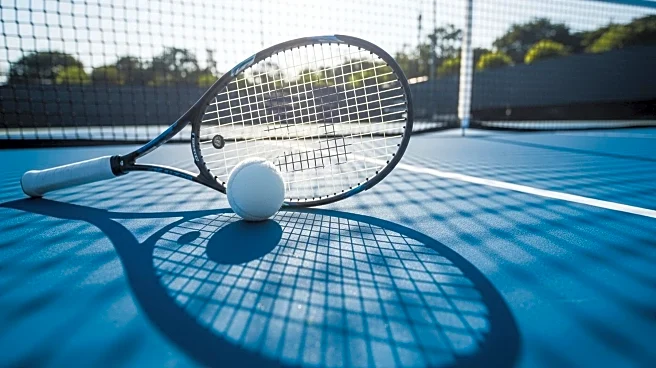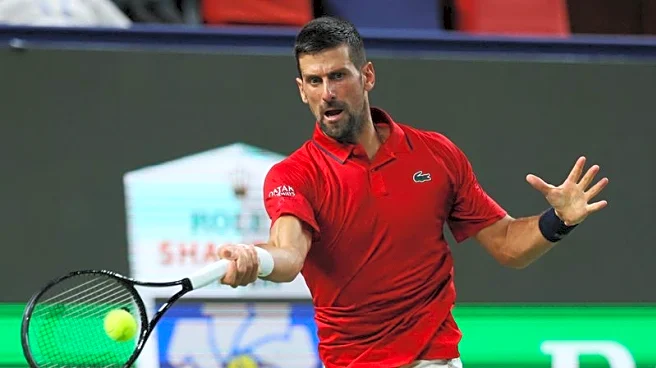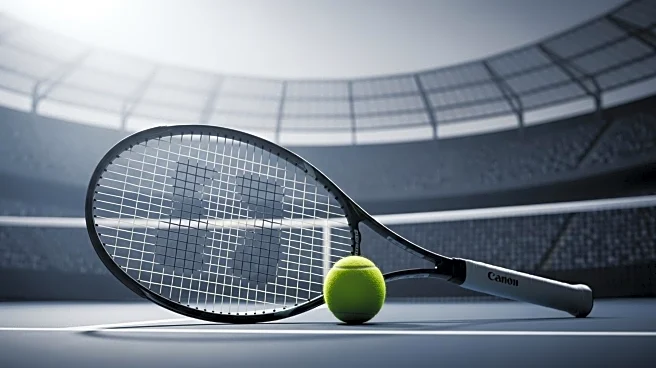What's Happening?
The Shanghai Masters has seen numerous players struggling with extreme heat conditions, leading to retirements and withdrawals. Jannik Sinner, among others, faced severe physical challenges due to the oppressive humidity, resulting in cramps and exhaustion. The ATP has been criticized for lacking a standardized heat policy, unlike the grand slam tournaments and the Women's Tennis Association, which have measures in place to protect players in extreme conditions.
Why It's Important?
The situation underscores the need for sports organizations to prioritize player safety and adapt to changing climate conditions. The lack of a standardized heat policy in ATP events raises concerns about player welfare and the potential health risks associated with competing in extreme temperatures. This issue is particularly relevant as global temperatures continue to rise, affecting outdoor sports and necessitating changes in scheduling and safety protocols.
What's Next?
The ATP is evaluating the implementation of an official heat policy in consultation with players, tournaments, and medical experts. This could lead to changes in tournament scheduling and the introduction of measures to protect players from extreme heat. The ongoing discussions may also influence other sports organizations to review their policies and ensure athlete safety in increasingly challenging environmental conditions.
Beyond the Headlines
The extreme heat conditions at the Shanghai Masters highlight broader issues within the tennis world, including the length of the season and the physical demands placed on players. As climate change continues to impact global weather patterns, sports organizations may need to reconsider the timing and location of events to minimize health risks and ensure player welfare.

